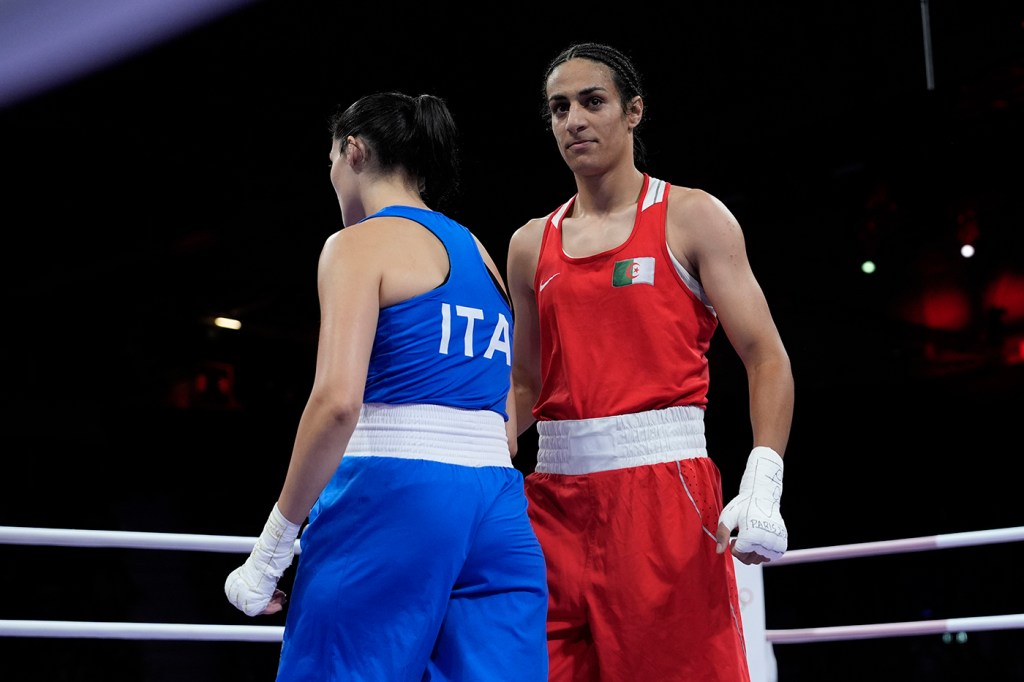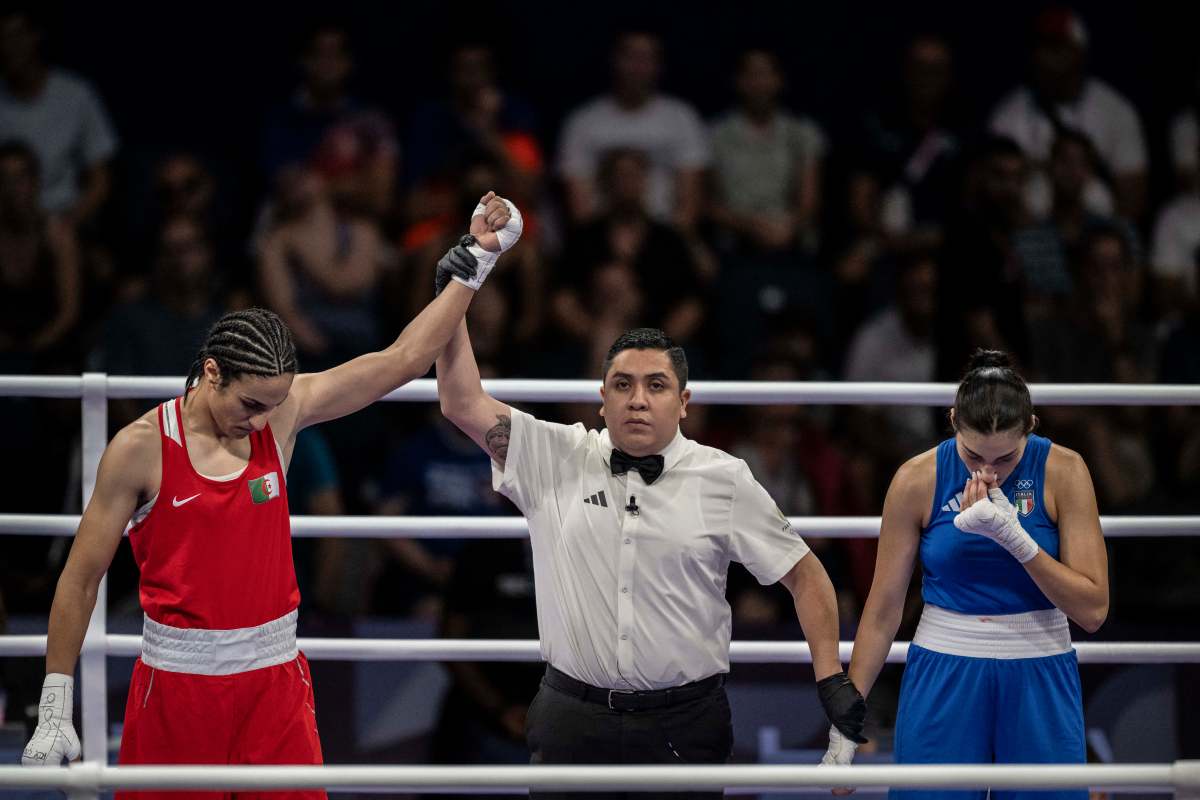There is a lot of information about gender eligibility tests for female athletes, according to KJ Rawson, an assistant professor of English and women’s, gender and sexuality studies at Northeastern University.

The Paris Olympics have been the source of global uproar after a 46-second fight between two women’s 66kg boxers. the weight situation sparked a debate about equality and fairness in sports.
Thursday’s fight between Algeria’s Imane Khelif and Italy’s Angela Carini ended prematurely after Carini was hit in the head and lost the match. After it was revealed that Khelif had been banned from last year’s world championships by the International Boxing Association (IBA) for failing a “gender eligibility test,” the a flood of misinformation, hate and protest quickly followed on social media.
Northeastern University experts say gender reassignment tests are biased, used to bias women, and often don’t take into account health conditions that can affect a person’s gender identity.
KJ Rawson, a professor of English and women’s studies at Northeastern, says: “One of the biggest problems with women’s eligibility testing for female athletes has been- they’re disproportionate and careless about how they’re called and managed,” says KJ Rawson, a professor of English and women’s, gender, and sexuality studies at Northeastern.
“Since sex is determined by many different factors—chromosomes, hormones, internal and external genitalia, sexual characteristics, etc.—and people Many are never tested for these factors, governing bodies need to know what tests they will require and what factors they consider most important for their eligibility criteria,” Rawson said. we.
The president of the IBA, Umar Kremlev, said that Khelif was disqualified from the competition last year because “it was confirmed that he has XY chromosomes,” although the evidence has not yet emerged to confirm that fact.
Khelif was assigned a female at birth, according to his passport, according to the Associated Press. That is the International Olympic Committee (IOC) limit for boxing eligibility.
Khelif is scheduled to face Hungary’s Anna Luca Hamori in the quarter-finals on Saturday. The Hungarian Olympic Committee is asking the International Olympic Committee to ban Khelif before the Games.
Medical conditions can cause high testosterone
There are many medical conditions that cause higher-than-average testosterone in women, including the common condition PCOS, polycystic ovarian syndrome, Rawson says.
Rawson says: “What is perhaps even more important about this question is that it shows how the dimensions of ‘proper’ sex are based on human type, which we know does not cover all people.
For example, he says a female competitor can be classified as having “high” testosterone if her levels are above 70 nanograms per deciliter of testosterone (ng/DL), but that would be a point and only one above the common species.
“For men, the lowest level is 300 ng/DL (and the ceiling is 1,000 ng/DL), which just goes to show how big the range is – and how subtle a few factors can be.” how much – but also that there is a wide gap between ‘normal’ testosterone levels for men and women where some people’s bodies naturally produce levels of testosterone that are considered ‘abnormal,'” Rawson he says.
Is Khelif intersex?
There has been speculation about whether Khelif is “intersex,” which describes people who don’t fit neatly into gender categories, often due to a medical condition, says Jessica Glazier, postdoctoral research associate at Northeastern.
Glazier, who examines the ways in which people categorize themselves and others, says: “There are many intersex people who may have developmental differences. sexual relations only to the extent that it does not conform to this heteronormative conception of sexual relations in nature.” of these parts. ”
“Most people don’t realize it’s there, and some people who have sex may not know they have it until later in life, like when they’re going through puberty, having surgery, or until they want to have children and the problem of having children,” he says.
Transgender athletes can find themselves in a losing battle with the rules governing participation in sports, such as track star Caster Semenya. Semenya, a two-time Olympic champion, is hyperandrogenous, meaning she has high levels of testosterone, according to CNN.
Semenya spoke about the negative effects of the testosterone-reducing medication she has to take to compete internationally.
Rawson says: “Because of the gendered nature of the sport, sports that are divided into male and female competitions have problems accommodating all competitors. “What we’re seeing in the current Olympics is a continuation and expansion of the intense scrutiny placed on some female athletes whose sexuality is being challenged so much because other people think they look they are very masculine. Of course, this is a separate conversation from how transgender athletes compete, although these issues are related. ”
The IOC, which has long been at loggerheads with the IBA, stood behind the decision to let Khelif compete.
“All athletes participating in the boxing competition at the Paris 2024 Olympic Games comply with the eligibility and participation regulations, as well as all applicable medical regulations set by the Paris 2024 Boxing Institute,” the IOC said in a statement.
“In our current world where gender has become a controversial issue, it’s often female athletes who don’t look feminine enough that are targeted for increased scrutiny,” Rawson said.
#Olympic #boxing #controversy #sparks #debate #gender #eligibility #testing #wrong




